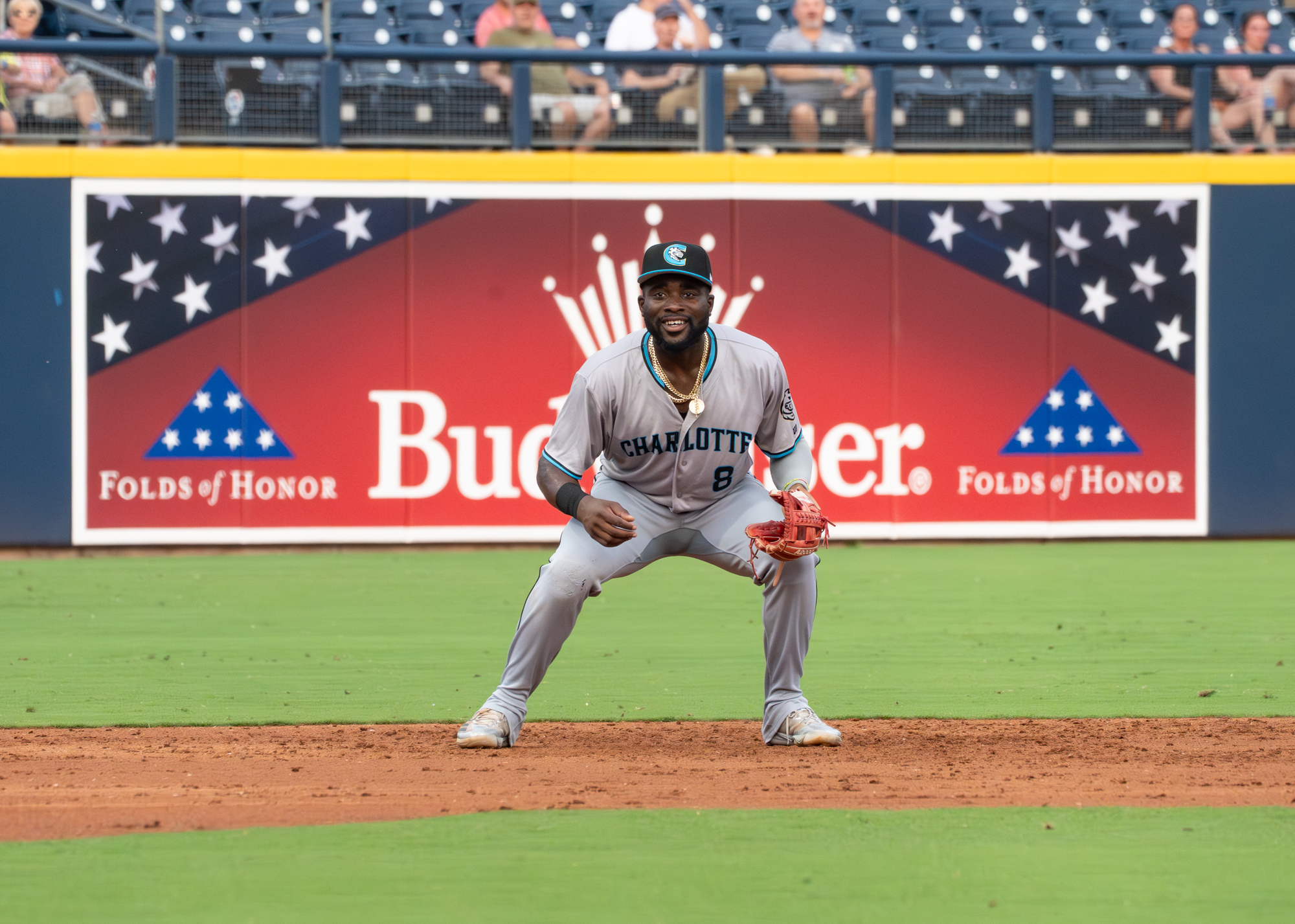So much went wrong for the White Sox over the course of their 0-6 road trip to Cleveland and Minneapolis. Generally speaking, a lot has to go wrong in order to go 0-6 against two teams that are respectable, but short of fearsome.
The White Sox offense only scored one crooked number over 55 innings, and they needed a 10th inning in order to score four runs in a game. The defense committed 11 errors over six games, giving them a league-worst 18 errors and .965 fielding percentage. Fielding percentage is normally a lazy way to evaluate defense, sure, but it does the job of describing the issue when the league is running a .985 clip.
The pitching was uneven, thanks in part to the aforementioned defense. The rotation covered the spectrum of results evenly across its five members ...
- Michael Kopech (great)
- Lucas Giolito (good)
- Dylan Cease (decent)
- Vince Velasquez (bad)
- Dallas Keuchel (LOL)
... but the positive contributions were undermined by poor bullpen work, and with results that had a negative correlation with salaries. José Ruiz, Tanner Banks and Reynaldo López did their jobs with leads, but Aaron Bummer, Kendall Graveman and Liam Hendriks all faltered to one degree or another.
And then there was Tony La Russa, who wasn't responsible for all the of the physical errors on the field, but threw himself into the mix at the very end of the series with the first-guessable ill-fated decision to have Liam Hendriks pitch to Byron Buxton with a base open and one out in the 10th inning on Sunday.
Hendriks had to pitch to Buxton at the start of the plate appearance, because there wasn't a base open until after the first pitch, when Hendriks bounced a curveball off Yasmani Grandal's forearm that allowed both runners to move up 90 feet.
Even after the runners moved up, it made some sense to explore the possibility of a strikeout. Lucas Giolito had struck out Buxton in each of his first three plate appearances of the game, and Hendriks got Buxton to nearly pop out in foul territory on the 1-0 fastball to even the count. Walking Buxton loads the bases for another good hitter with Luis Arraez, so without automatic relief in a free pass, so I get working out of the zone to explore the opportunity of two outs in two batters. Both are suboptimal choices, but that's the risk Hendriks incurred by walking a third-catching ninth hitter to bring one of baseball's premier talents to the plate.
But once he fell behind 3-1 with two more fastballs and showed no inclination to use a breaking ball, that's when any sense evaporated. After all, Tony La Russa saw this same scenario play out on April 16, when Hendriks fell behind fastball-mashing Ji-Man Choi 3-1 with two outs in the ninth inning, and first base opened thanks to a runner moving up.
There's one key difference, in that Hendriks had two outs instead of one. That made it slightly easier to give Choi the pass when first base opened over the course of the battle, because then it became solely about Hendriks being able to beat Taylor Walls, which he did.
Here, walking Buxton meant facing Arraez with the bases loaded and one out, and then Jorge Polaco afterward if the game got that far. But because Buxton demolished a 3-1 Hendriks fastball, the game never even got to Arraez.
Which is ironic, because Tony La Russa made his fear of Arraez a point of emphasis in his postgame media session, to the point that warped the entire scenario. Via James Fegan:
"Yeah, there's an option. Pitch him tough. But the guy on deck (Arraez) is hitting .300 and he feasts on fastballs. You give a pitcher a chance to make a pitch. (Hendriks) tried to bounce a curveball, created (runners on) second nd third. Any time you load the bases you better have a significant advantage with the guy on deck. Because you're playing right into his hands and the guy on deck is a tough out. We had a better chance to do what (Giolito) did to him the first couple times up."
This falls apart on two levels.
Level One: Arraez "is hitting .300 and feasts on fastballs," which also describes Buxton.
Remember Andrés Muñoz, the Seattle reliever who pitched one of the most impressive innings we've seen against the Sox back on April 14? He was throwing 102 mph at the top of the zone and spotting his slider on both sides of the plate, and the whole arsenal looked unhittable.
Anyway, here's Buxton turning around a Muñoz 101-mph fastball on an 0-2 count above the zone for a go-ahead homer in the eighth inning a few days earlier.
If Buxton can catch up to 100.5 mph on an 0-2 count, you can see why he wouldn't be fazed by 98 mph on 3-1. That's probably how he hit Hendriks' fastball 33 feet farther.
Level Two: Hendriks would have had to face Arraez regardless.
La Russa's explanation above makes it sound like he considered the situation Buxton OR Arraez, rather than Buxton AND Arraez. Even if Hendriks somehow retired Buxton, Arraez would've been coming to the plate with two outs. There's pretty much no way to avoid that matchup unless Buxton lined into a double play, or a sac fly attempt was too shallow.
It doesn't stand up to any real scrutiny, but I can establish some logical consistency when tying it to La Russa's attempts to rationalize other confusing decisions in the past.
If you're looking for a baseball-centric reasoning, La Russa seems to have an unhealthy fixation on contact for contact's sake. There's last May, when La Russa wouldn't pinch-hit for Leury García or Billy Hamilton because he was "looking for a single" in the eighth inning when the Sox trailed by three and both players represented the tying run.
There's also this whole month, when he elevated García to the third and second spots in the order to get him going, as though he's an integral part of the offense rather than somebody to be reflexively penciled in the bottom third.
There's also the first game of this series, when he didn't pinch-hit Grandal for Reese McGuire or Jake Burger with the tying run on third, even though Grandal was by far the best hitter available.
Grandal proved his worth by delivering a go-ahead single off the right field wall with two outs in the 10th on Sunday.
If you don't buy that theory, the only other precedent is even less flattering:
La Russa thinking there were two outs instead of one.
Hey, it wouldn't be the first time. Last April, La Russa let an admittedly tired Lucas Giolito face four extra batters, a decision that made sense when La Russa recounted the wrong number of outs in his summary:
“Is that what he said? Well, then, that’s my fault for not recognizing because I looked at it, he walked the leadoff guy, which wasn’t good, and he gets two outs (note: he got one out), at that point, I was confident he would get the third out.”
La Russa might've misspoke, but he reflected the incorrect number of outs twice. Also, then and now, the way he managed both situations reflected the idea that his pitcher only had one more batter to retire.
However, if I'm to maintain my own logical consistency, I should refer back to the Choi at-bat above, when I said that La Russa might've been more likely to issue the walk if Arraez were the last batter standing. Alas, when the only explanations given are so riddled with holes, it's hard to make everything line up. Maybe we're grasping at air after a certain point.
Regardless of the specific "why," the result was the kind of lapse that rattles confidence even if the other facets of the White Sox eventually right themselves, and the kind that risks throwing the whole experiment into disarray if he has to contend with malfunctioning elements all season long. James Fegan's write-up suggests such doubters are in their ranks:
The White Sox hired La Russa for his experience, instincts and feel in these situations, and they believed those traits would help the team more often than not. If you’re a fan, or even a team employee who doesn’t trust that his experience still translates to statistically optimal decisions, it’s inefficiencies in these moments that you fear could keep the Sox from reaching their World Series ceiling.
It's too early to hammer any panic buttons, and there aren't really any levers to pull even if you wanted to. The roster is the roster, especially as long as Lance Lynn, Luis Robert and Eloy Jiménez are out. That means players will have to step up, but that means La Russa has to elevate his game, too. When everybody on the field looks so unprepared, the dugout can't really afford to exacerbate the issues, because it only makes it easier to point the fingers his way.






